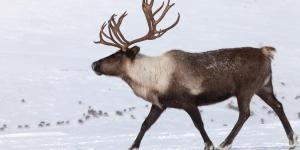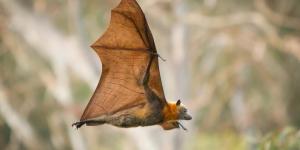Where Do Hyenas Live?

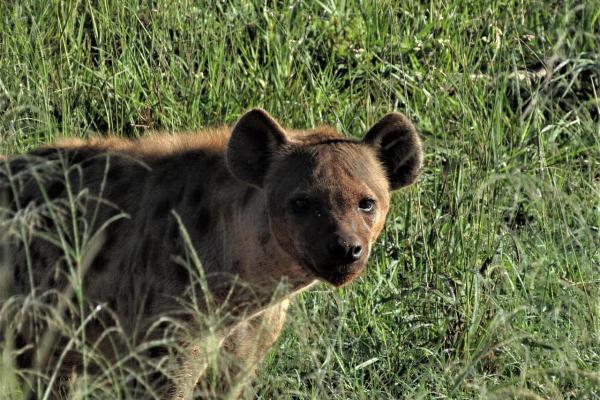
Although phylogenetically most closely related to cats, hyenas share many behavioral and morphological traits with dogs. Over time, there have been several genera of hyenas, but most of them have become extinct. Today, there are only four species left, making it the least common family of mammals. Despite their low diversity, hyenas are unique and an important part of ecosystems in Africa and parts of Asia.
The following AnimalWised article is about where hyenas live and other important features of this peculiar species.
Distribution of hyenas by country
Hyenas are widespread in most habitats. However, their distribution varies slightly by species. Below, we describe their distribution by species in more detail:
Brown hyena (Hyaena brunnea)
It is currently the rarest hyena species. The brown hyena inhabits desert areas, semi-deserts and open Savannah. It can survive near urban areas by scavenging. The brown hyena prefers rocky, mountainous areas because it can find shade there and does not depend on readily available water sources for frequent drinking. The following countries are home to this species.
- Angola
- Botswana
- Namibia
- South Africa
- Zimbabwe
Striped hyena (Hyaena hyaena)
The striped hyena has a very wide and patchy range, covering not only all of North Africa, but reaching almost as far south as Asia. Today, the species' range is patchy in most areas, suggesting that it occurs in many isolated populations. The following countries are native to this species:
- Afghanistan
- Algeria
- Armenia
- Cameroon
- Chad
- Djibouti
- Egypt
- Ethiopia
- Georgia
- India
- Iran
- Iraq
- Israel
- Jordan
- Kenya
- Lebanon
- Libya
- Mali
- Morocco
- Nepal
- Nigeria
- Pakistan
- Saudi Arabia
- Senegal
- Syria
- Tanzania
- Uganda
- Occidental Sahara
- Yemen
Spotted hyena (Crocuta crocuta)
The spotted hyena is native to sub-Saharan Africa. Because of its widespread range and large population, it is classified by the IUCN as not endangered. However, outside protected areas, the species is declining due to habitat loss and poaching. The following countries are native to this species:
- Angola
- Benin
- Botswana
- Cameroon
- Chad
- Democratic Republic of the Congo
- Ivory Coast
- Equatorial Guinea
- Eritrea
- Ethiopia
- Ghana
- Guinea
- Kenya
- Mali
- Mozambique
- Namibia
- Niger
- Nigeria
- Rwanda
- Senegal
- Sierra Leone
- Somalia
- South Africa
- Sudan
- Tanzania
- Uganda
- Zambia
- Zimbabwe
Aardwolf (Proteles cristata)
This species, also known as the termite-eating hyena, has a rather inconspicuous range, especially in eastern and northeastern Africa. This species is native to the following countries:
- Angola
- Botswana
- Egypt
- Eritrea
- Eswatini
- Ethiopia
- Kenya
- Mozambique
- Namibia
- Somalia
- South Africa
- Sudan
- Tanzania
- Uganda
- Zambia
- Zimbabwe
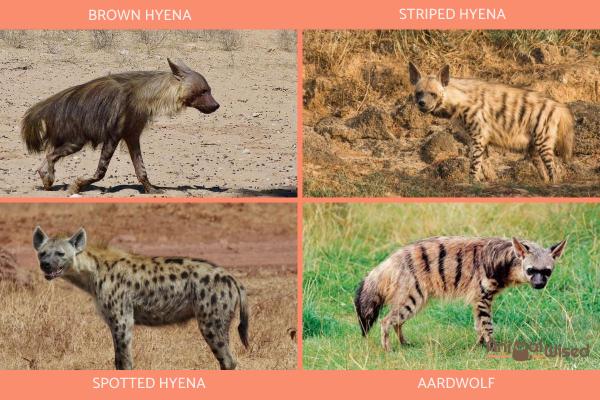
The different habitats of the hyenas
Now that we know where hyenas live, we will discuss their habitat.
- The brown hyena: The brown hyena: it develops in dry habitats with very little rainfall per year, less than 100 mm. In this sense, it lives in the coastal areas of the south, in semi-deserts, thickets, open savannas of the wooded type, where rainfall is higher. It also extends to populated and cultivated areas. It prefers rocky, mountainous areas where it finds bushy places to rest.
- The striped hyena: Its habitat consists of open areas or thorny, brushy areas characterized by aridity or semi-aridity. Although it can spread to the Sahara, it avoids open ecosystems as well as wooded areas or dense vegetation and very high mountains. However, in countries such as Lebanon and Jordan, it occurs in oak forests and has also been sighted at altitudes of about 10498 ft (ca. 3,200 meters). It can also live near human aggregations.
- The spotted hyena: The species is more general in terms of habitat, as it can develop in semi-deserts and savannas, but also in open, dense and dry forests. Likewise, it can also be found at altitudes around 13451.44ft (ca. 4,100 m). Although they tolerate long periods without water, they require little water, so they spread from areas where water is scarce overall. Like the striped hyena, it can live near human aggregations.
- The aardwolf: Lives in open grassy plains and is not present in extreme forests or deserts. It also lives in thickets, savanna woodlands, and gravel plains. It can live in areas where there is a lack of water, as it meets this need with its food. Its range extends to altitudes of about 6561.68 ft (ca. 2,000 m).
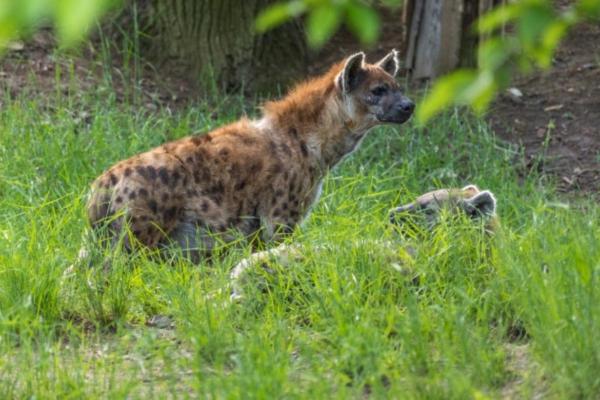
Protected areas for hyenas
Depending on the species, hyenas inhabit certain protected areas in their native regions. The brown hyena, for example, develops on a larger scale in unprotected areas, which has led to it being considered near endangered by direct hunting in these unregulated spaces. This is because they are mistakenly considered dangerous to livestock, even though this risk is really low.
The other hyena species are more widespread in protected areas. However, there is a contradictory aspect, as some areas declared as protected also allow hunting of these animals.
Some protected areas where hyenas are found are:
- Namib-Naukluft Conservation Area (CA)
- AC Skeleton Coast
- AC Tsau//Khaeb (restricted area)
- Etosha National Park (NP) (Namibia)
- Kgalagadi transboundary NP (South Africa, Botswana)
- Makgadikgadi NP (Botswana)
- Pilanesberg NP (South Africa)
- Serengeti NP (Tanzania)
- Shamwari Game Reserve (RC) (Eastern Cape, South Africa)
- Central Kalahari RC (Botswana)
- RC Maswa
If you want to learn more about hyenas, do not miss this other article where we talk about what hyenas eat.
If you want to read similar articles to Where Do Hyenas Live?, we recommend you visit our Facts about the animal kingdom category.
- AbiSaid, M. & Dloniak, SMD (2015). Hyaena hyaena . The IUCN Red List of Threatened Species. Available at: https://dx.doi.org/10.2305/IUCN.UK.2015-2.RLTS.T10274A45195080.en
- Bohm, T. & Honer, OR (2015). Crocuta crocuta . The IUCN Red List of Threatened Species. Available at: https://dx.doi.org/10.2305/IUCN.UK.2015-2.RLTS.T5674A45194782.en
- Green, D.S. (2015). Cristata proteles . The IUCN Red List of Threatened Species. Available at: https://dx.doi.org/10.2305/IUCN.UK.2015-2.RLTS.T18372A45195681.en
- Wiesel, I. (2015). Hyaena brunnea . The IUCN Red List of Threatened Species. Available at https://dx.doi.org/10.2305/IUCN.UK.2015-4.RLTS.T10276A82344448.en

